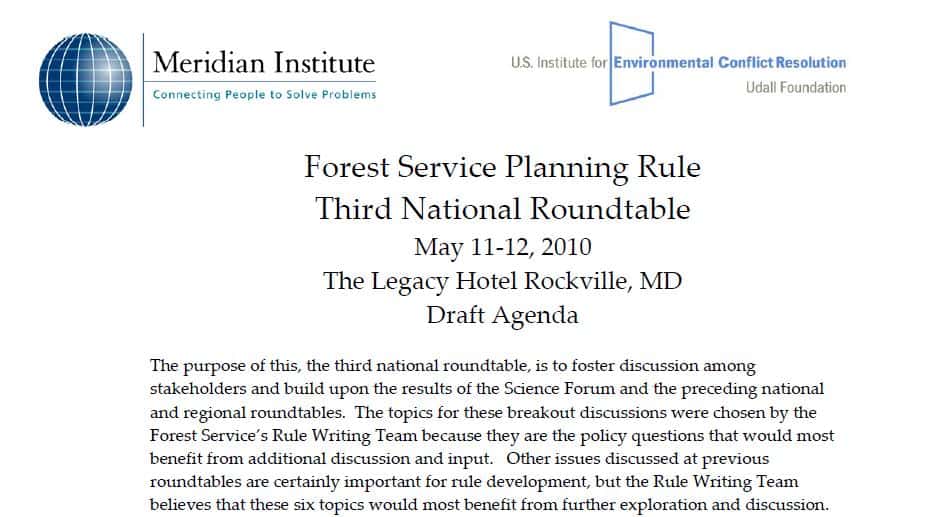Thanks to Peter Williams for this update and roundup of interesting links:
“We are updating our electronic resources with completely new blog technology and new material on the planning rule website: http://fs.usda.gov/planningrule
The “History of Forest Planning” webpage has been updated to include the 1990 Critique of Forest Planning, Volumes 1 — 11
The new blog, when stood up, will demonstrate a variety of new features that may have value during subsequent planning efforts throughout the agency; we are coordinating closely with CIO regarding security related to those features; exact features that get stood up will depend on the outcome of that coordination.
Several other agency, Departmental, or administration initiatives are worth knowing about too:
State Assessment and Resource Strategies (Part of the State and Private Forestry Redesign effort)
LINK: http://www.fs.fed.us/spf/redesign/resourcecenter.shtml
Addressing “all lands” and a broad set of relevant issues identified by each State Forester; some States are pushing hard for these assessments to “guide” or play a significant role in Forest Plan revisions & amendments; Helps set context state-by-state
Collaborative Forest Landscape Restoration Program/Projects
LINK: http://www.fs.fed.us/restoration/CFLR/index.shtml
Proposals just submitted by Forests and Grasslands to each relevant RO for forwarding to WO; multiparty monitoring and collaboration are highlighted
State Climate Adaptation Plans
LINK: http://www.pewclimate.org/what_s_being_done/in_the_states/adaptation_map.cfm
May become part of Congressional climate change legislation; could set context for Forest Planning
Cohesive WildFire Management Strategy
LINK: Homepage — http://www.forestsandrangelands.gov/leadership/index.shtml
Strategy — http://www.forestsandrangelands.gov/leadership/strategy/index.shtml
Public meetings conclude at the end of May; a draft cohesive fire strategy is due in November and will be updated every 5 years after that.
America’s Great Outdoors Initiative
LINK: Presidential Memo http://www.whitehouse.gov/the-press-office/presidential-memorandum-americas-great-outdoors
Initiative Homepage: http://www.doi.gov/americasgreatoutdoors/
On April 16, 2010, President Obama signed a Presidential Memorandum establishing the America’s Great Outdoors Initiative to be led by the Secretaries of the Interior and Agriculture, the Administrator of the Environmental Protection Agency, and the Chair of the Council on Environmental Quality (CEQ); this initiative carries forward elements of the ‘all lands’ vision of Secretary Vilsack. ”






